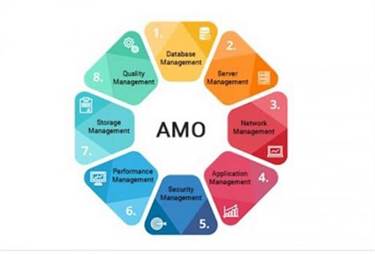18, Nov 2021
Scalability And Elasticity In Cloud Computing
Scalability is your long-term technique, making certain your tech grows with your corporation. Elasticity is your short-term answer for handling surprising adjustments with out breaking a sweat. Join over 600K businesses that trust DigitalOcean for their cloud infrastructure wants. With a give consideration to simplicity, efficiency, and scalability, DigitalOcean gives you the liberty to grow your small business without the effort of managing traditional servers or overpaying for unused sources.
On the other hand, horizontal scaling entails increasing or shrinking current infrastructure capacity by including or eradicating existing elements. Automatic scaling opened up numerous potentialities for implementing big information machine studying fashions and information analytics to the fold. Overall, Cloud Scalability covers anticipated and predictable workload calls for and handles fast and unpredictable modifications in operation scale.
Additionally, a scalable cloud setting presents resilience in opposition to system failures or disruptions. Vertical scaling, then again, allows for increasing the capacity of a single machine with out the necessity for added machines or infrastructure. Imagine computational energy not caught in distant knowledge facilities but distributed right where the action is, slashing delays and supercharging response occasions. This combo of edge computing and elasticity may redefine performance requirements across the board.
Investing in scalable cloud infrastructure positions a business to deal with future progress and technological developments with ease. As the company evolves, its cloud surroundings can scale to help new business fashions, customer bases, and information volumes. Vertical scalability, or scaling up or down, refers to adding more power (like CPU, RAM) to an current machine or replacing one with a extra highly effective one.
- One of the main advantages of horizontal scaling is its capability to handle high masses and supply excessive availability.
- With cloud computing, you possibly can adjust compute sources to satisfy changing demands.
- Both approaches have advantages and considerations relying on the system’s specific requirements.
- Cloud suppliers additionally worth it on a pay-per-use mannequin, permitting you to pay for what you utilize and no more.
- The evolution of technologies performs a pivotal position in enhancing scalability and elasticity.
Before you study the distinction, it’s important to know why you want to care about them. If you’re considering including cloud computing services to your current structure, you have to assess your scalability and elasticity wants. Overall, scalability and processing power go hand in hand, enabling businesses to maintain a aggressive edge and effectively meet the calls for of a data-intensive world. Diagonal scalability is a hybrid approach combining horizontal and vertical scalability elements.
What Is Cloud Scalability?
Server outages result in revenue losses and customer dissatisfaction, each of that are dangerous for enterprise. We’ve additionally gone into extra detail in regards to the differences between horizontal and vertical scaling here. Cloud computing supplies significant advantages over on-premises computing, including the flexibility to increase operations with out buying new hardware. Scalability is an essential factor for a business whose demand for more sources is rising slowly and predictably.
Existing prospects would also revisit old wishlists, abandoned carts, or try to redeem accumulated factors. This would put a lot more load on your servers in the course of the campaign’s period than at most occasions of the 12 months. Say you run a limited-time supply on notebooks to mark your anniversary, Black Friday, or a tech festival. The more effectively you run your consciousness marketing campaign, the more the potential buyers’ interest you’ll be able to count on to peak. Policyholders wouldn’t notice any modifications in efficiency whether you served more prospects this 12 months than the earlier 12 months.
Scalability Benefits Compared To The Elasticity
Elasticity is your go-to resolution when dealing with workloads as unpredictable as the weather. SaaS companies typically see a spike in usage following product launches or main updates. Cloud elasticity permits these companies to scale their infrastructure assets to satisfy the surge in user activity without over-provisioning hardware that can turn into underutilized post-launch. This prevents performance degradation during critical periods and aligns operational prices with precise usage. Accurately predicting and assembly demand is a problem in implementing cloud elasticity.

Horizontal scalability, or scale-out, refers to adding extra instances of the same useful resource to handle the increased workload. For example, if an online software is experiencing high visitors, extra servers may be added to distribute the load and guarantee responsive efficiency. Online gaming platforms can experience sudden surges in consumer exercise, particularly throughout new sport releases, particular occasions, or competitive gaming tournaments.
Cloud elasticity ought to be thought-about a granular approach to dynamically allocating sources to present infrastructure in reaction to instant demand fluctuations. On the other hand, cloud scalability involves resource enlargement on a more persistent stage to meet static workload growth. The two work in conjunction and collectively cut back costs whereas ensuring that prospects receive the identical digital expertise regardless at all cloud scalability and elasticity times, now and into tomorrow. Hybrid scalability combines elements of both horizontal and vertical scaling to stability resource distribution and manage development. Typically, this technique might involve vertically scaling to a sure level earlier than it becomes more cost-effective to horizontally scale. Elasticity, on this scenario, operates throughout the scalable infrastructure, adjusting assets in real-time to match the fluctuating site visitors patterns.
Elasticity is dependent upon superior instruments that automatically regulate your resource ranges, meaning your staff needs the know-how to set up, monitor, and tweak these methods as needed. This requires a solid understanding of the know-how and a readiness to dive into the nitty-gritty details of cloud useful resource management. The initial funding is significant, as scalable systems usually require extensive hardware and infrastructure. This can pose a problem, particularly for smaller organizations or these with tight budget constraints.
How Does Cloud Scalability Work?
Scalability measures a system’s capacity to deal with increased load by scaling up (vertical scalability) or out (horizontal scalability). In cloud computing, scalability and elasticity normally go hand-in-hand to supply a robust and adaptable framework for resource administration. While scalability includes increasing sources to meet rising demand, elasticity handles the fluctuations in that demand, fine-tuning resource allocation in actual time. Scalability is considered one of the main the cause why companies opt for cloud computing. It allows organizations to scale resources on demand and meet peak workloads without investing in costly infrastructure. This flexibility offered by cloud scalability helps companies operate effectively and adapt to changing market conditions.
Over-provisioning refers to a scenario where you purchase extra capability than you want. Occasionally, the restaurant has a lot visitors that it adds tables and chairs on its patio, a place that’s in any other case kept open for air flow. The restaurant seats extra people with out leasing more room; it just reconfigures the patio to seat the extra visitors. Scalability enables secure progress of the system, whereas elasticity tackles immediate useful resource demands. Each of those products integrates seamlessly with DigitalOcean’s ecosystem, providing a unified expertise that simplifies the scalability process.
Vertical Scaling (scaling Up)
This involves growing or decreasing sources, similar to vCPU, memory, and community capability in real-time to match the desired efficiency stage under altering masses. The notification triggers many users to get on the service and watch or upload the episodes. Resource-wise, it’s an exercise spike that requires swift useful resource allocation. Thanks to elasticity, Netflix can spin up a quantity of clusters dynamically to address different sorts of workloads. Cloud scalability could be categorized into different types based on how assets are adjusted to satisfy changing demands.

Scalability steps in to ensure that the applying can handle a major improve in consumer visitors, say during a promotional campaign—the infrastructure scales to accommodate the increased load. Elasticity complements scalability by offering the mechanism to scale resources up or down routinely based on the changing needs of the system. This dynamic interaction ensures that the system can handle peak loads effectively without wasting resources throughout off-peak intervals. With the growing number of information being produced, scalability and elasticity play a vital function in managing workloads efficiently. However, both ideas have distinct roles and are essential in their own respective methods. Scalability is the power of a system to add, take away, or reconfigure the hardware, software, and different resources to handle a rise or lower in usage.
Rapid Elasticity Used Circumstances And Examples
This effectivity not only optimizes knowledge administration operations but in addition significantly reduces prices. It permits companies to add new parts to their existing infrastructure to cope with ever-increasing workload calls for. However, this horizontal scaling is designed for the lengthy term and helps meet present and future resource wants, with plenty of room for expansion.

Scalability and elasticity characterize a system that may develop (or shrink) in each capacity and sources, making them somewhat comparable. The actual distinction lies within the necessities and situations underneath which they perform. This guide covers every little thing you should know about the important thing differences between scalability and elasticity.
How Does Cloudzero Improve Administration Of Cloud Elasticity?
For businesses with steady, predictable development, scalability could additionally be more cost-effective as it eliminates the chance of sudden demand spikes. For companies with unpredictable, fluctuating calls for, elasticity can be extra cost-efficient as it adjusts assets in real-time, ensuring you only pay for what you use. Ultimately, choosing the right method is dependent upon the specific wants and targets of every enterprise. This kind of scalability is best-suited when you experience elevated workloads and add sources to the present infrastructure to enhance server efficiency. If you’re looking for a short-term answer to your instant needs, vertical scaling may be your calling. When we discuss scalability, we’re speaking about the ability of your cloud companies to develop with you.
One such side is the cloud’s elastic and scalable capabilities, which have risen to kind one of the most essential options of cloud companies. To put it merely, these two features are answerable for the finest way your website handles visitors and its potential surges. You’ve in all probability noticed this by now that cloud elasticity and cloud scalability go hand-in-hand. When you may have true cloud elasticity, you probably can keep away from underprovisioning and overprovisioning. Moreover, the effectivity you are capable of obtain in on a regular basis cloud operations helps stabilize prices. Cloud elasticity permits software as a service (SaaS) vendors to supply versatile cloud pricing plans, creating additional comfort for your enterprise.
Grow your business, transform and implement technologies based on artificial intelligence. https://www.globalcloudteam.com/ has a staff of experienced AI engineers.
- 0
- By admin








